Why is My Bread So Dense? (Bread Machine Section Included)
Sneak Peek: “Why is my bread so dense?” is the #1 question I receive from my readers. This post will address the most common causes of dense and heavy bread. Don’t miss the final section devoted to issues unique to bread machine users.
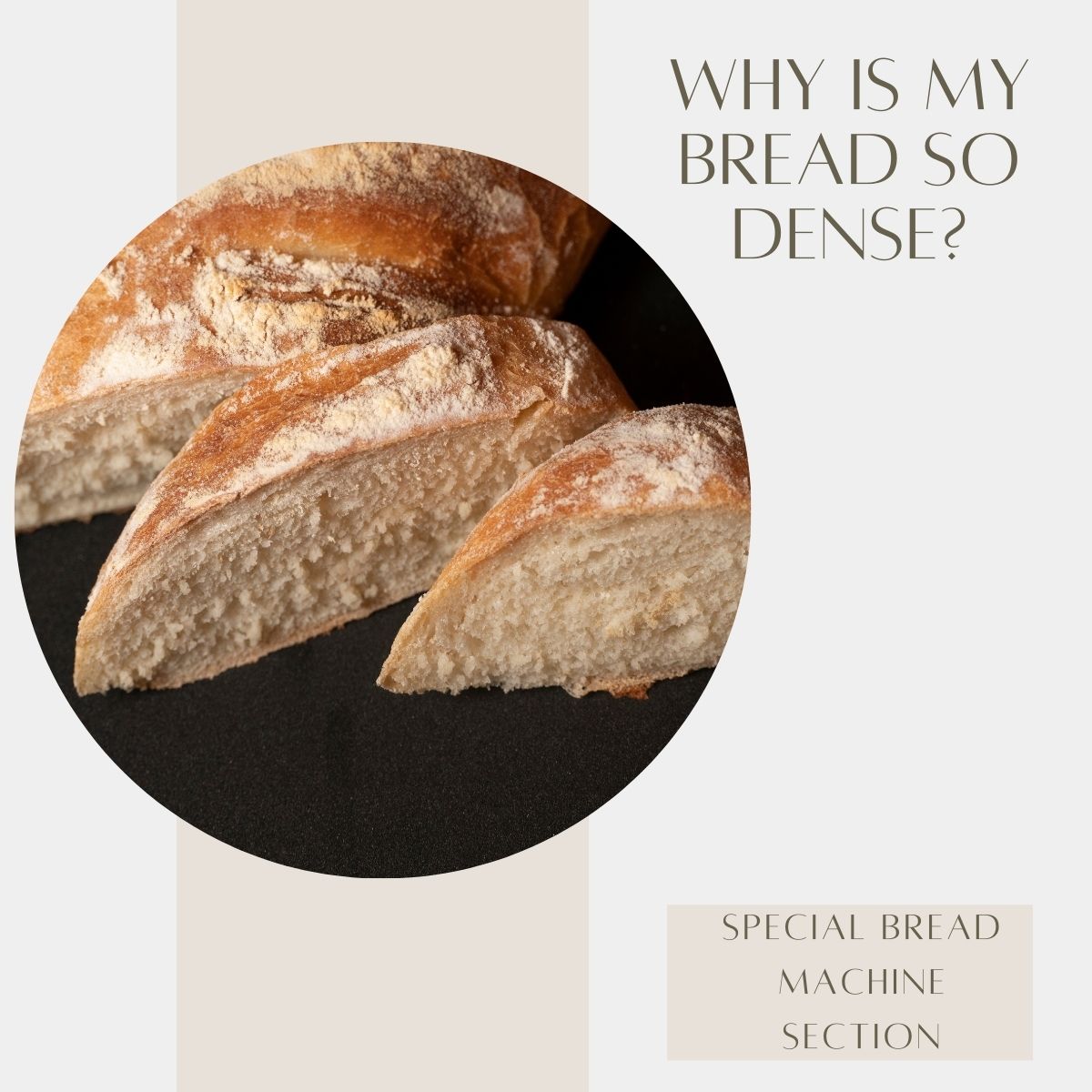
As an Amazon Associate, I earn from qualifying purchases.
Are you frustrated and disappointed that your homemade bread came out heavy, dense, and smaller than you hoped? Unfortunately, it can happen to anybody, especially beginners and people who like to experiment.
If that’s you, don’t give up making bread. Instead, let’s brainstorm about the possible cause and figure out what to do next.
What Is the Leading Cause of Dense Bread?
There are so many reasons–some more common than others. Fermentation is at the heart of many of them. (FYI: Fermentation refers to the process yeast goes through to make bread rise or proof.)
If the fermentation is too fast or too slow, too long or too short, or not as predicted, dense bread is often the result.
I have divided the leading causes of denseness into four main categories. The final section of this article is written primarily for bread machine users. However, breadmaker-specific advice is sprinkled throughout this post.
Ingredients
1. Does your bread have a high ratio of whole-grain flour to white flour?
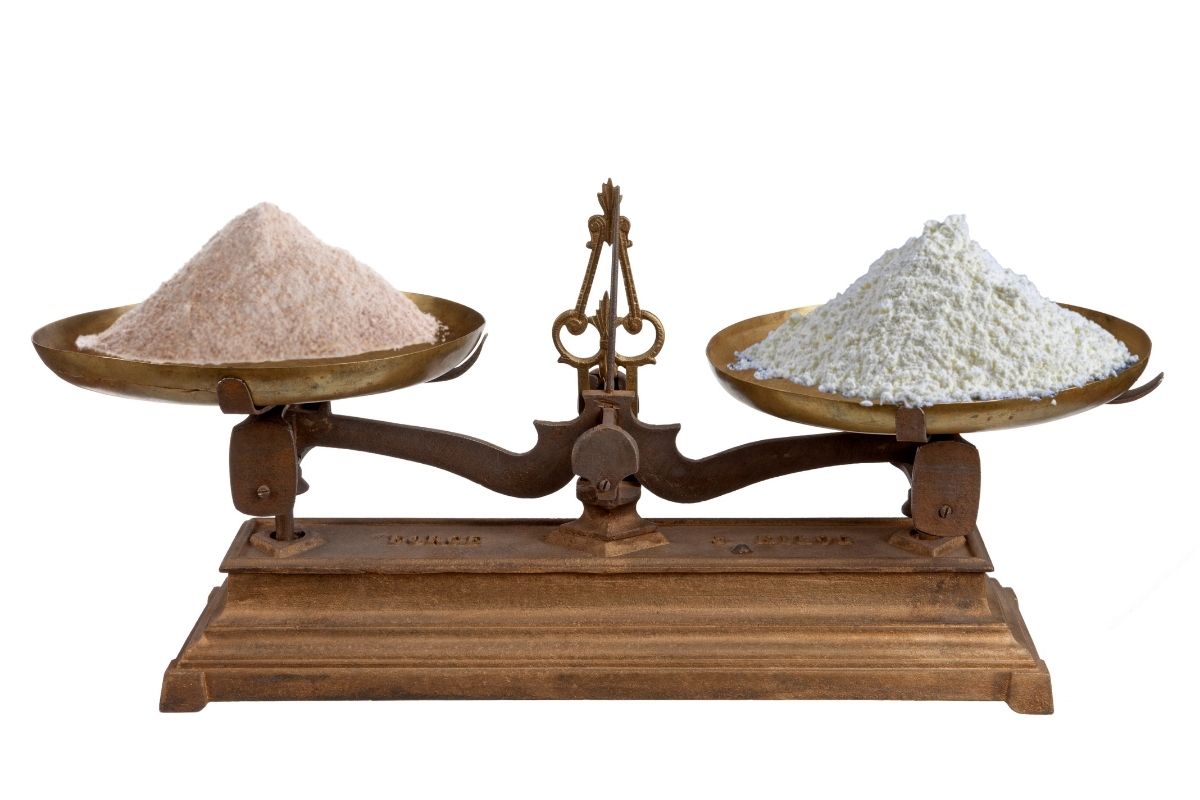
Bread with a high ratio of whole-grain flour tends to be a low-riser. Substituting whole wheat flour for white flour in any recipe will change the texture.
If you aren’t using a tried-and-tested whole wheat recipe, substitute 1 cup of whole-grain flour for one cup of white flour. If that works well, try a little more next time.
I don’t recommend substituting whole wheat flour for more than half of the flour in the average homemade bread recipe. But, even then, you can expect your bread to be slightly denser than a loaf made with 100% bread flour.
Try adding vital wheat gluten(paid link) according to the package directions. It will help bread rise higher. A standard recommendation is 1-2 tablespoons for every 2-3 cups of flour.
On a related topic: Is the ratio of non-gluten flour to gluten flour too high? For example, does the recipe have too much oatmeal or potato flour that is low in protein content compared to bread flour? If so, replace some non-gluten flour with bread flour or add vital wheat gluten, as discussed above.
See# below for more discussion about substituting all-purpose flour for bread flour.
2. Is your flour fresh?
Whole wheat flour and other specialty flours like rye and spelt(paid links) can go rancid quickly. Store whole grains in your refrigerator or freezer, especially in a warm and humid climate.
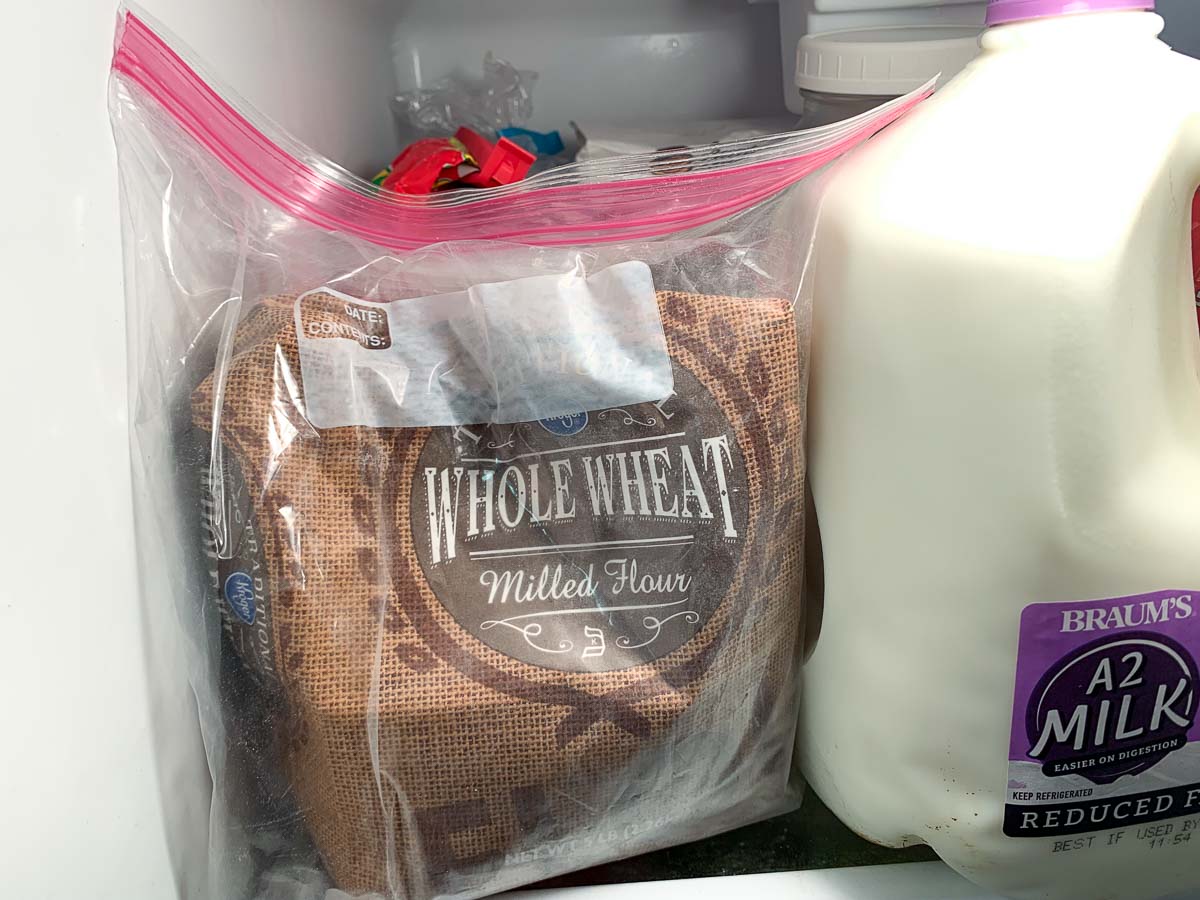
All-purpose and bread flour will stay fresh longer, but they also have an expiration date. You might be surprised by how short the freshness window is. So don’t let old flour spoil your plans for a light and fluffy loaf.
3. Were there too many add-ins?
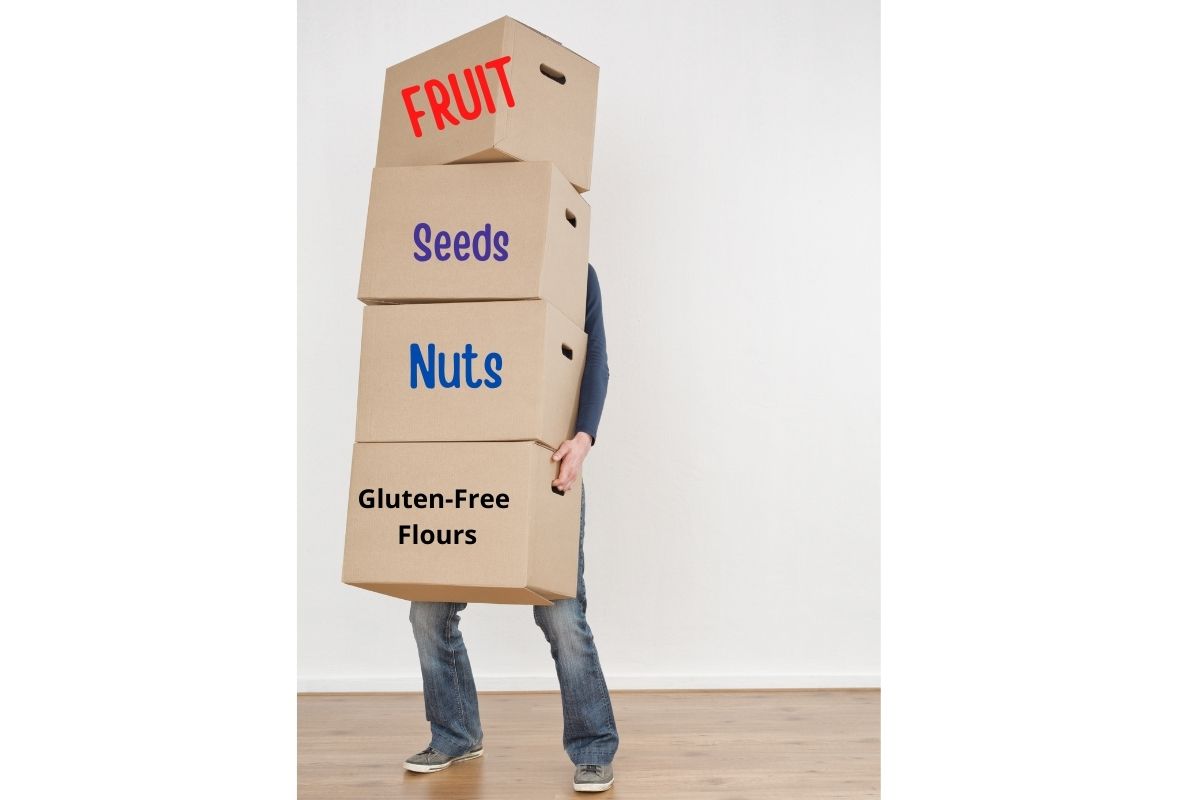
Added fruit, seeds, and nuts can weigh the dough down. If you think this is a factor, try reducing the amount.
4. Did you add the salt?
Sometimes, home bakers on low-salt diets want to cut out the salt completely. No salt means the yeast will ferment too quickly. Likewise, too much salt will deter fermentation.
Pretend that a car represents the bread dough. The salt is the brake, and the gas pedal is yeast.
Driving a car without brakes will likely result in a crash. In the same way, yeast in bread with no salt will usually exhaust itself way too early, causing dense bread.
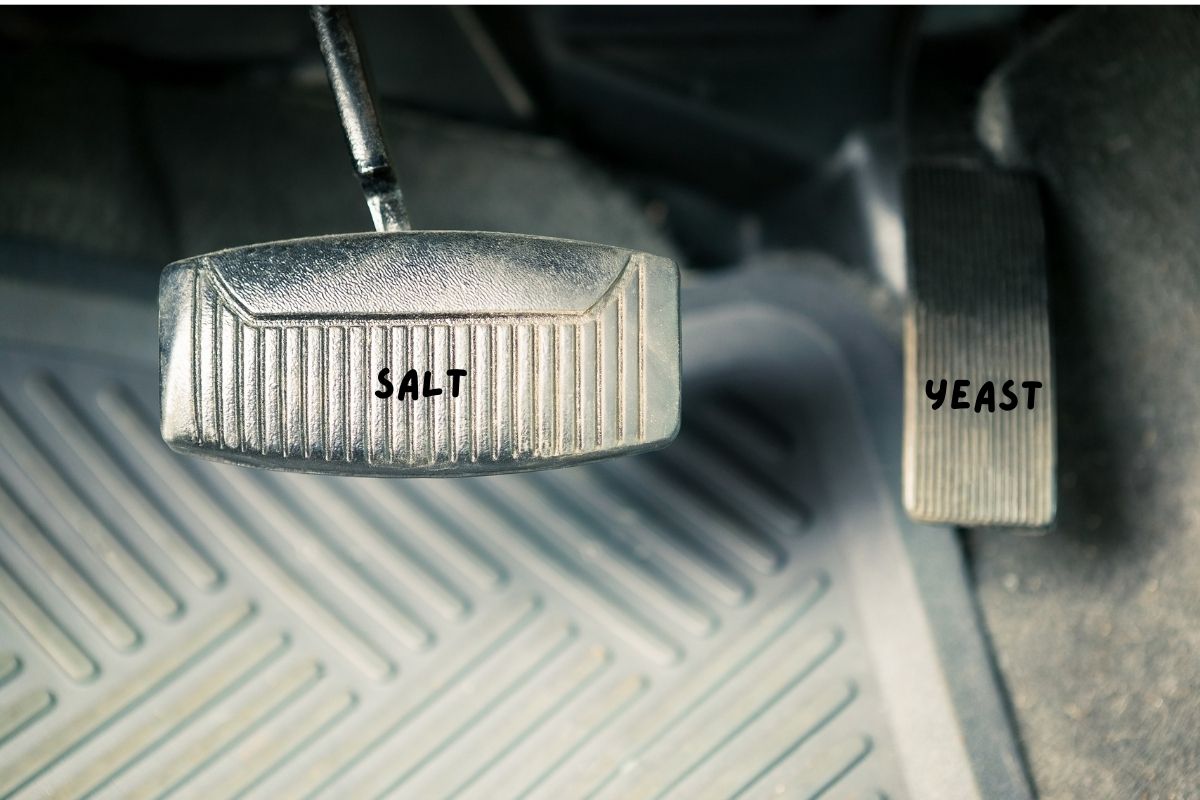
Driving a car with your foot on the brake will get you nowhere. In the same way, too much salt will keep your loaf from going anywhere (specifically, rising as it should).
It would be best if you used the gas pedal (yeast) and the brake (salt) in tandem for your car (your loaf of bread) to arrive at its destination successfully. But, of course, this principle is more evident in some recipes than others.
If you are watching your salt intake, try cutting back, not out.
A final note about salt: Unless the recipe writer specifies the type of salt, it’s best to weigh it. If the recipe doesn’t specify, go with table or sea salt.
Did I mention that bread made without any salt will taste bland?
If you need a no-salt recipe, try this salt-free focaccia (also good for pizza crust).
5. Did you get distracted and leave an ingredient out or lose count?
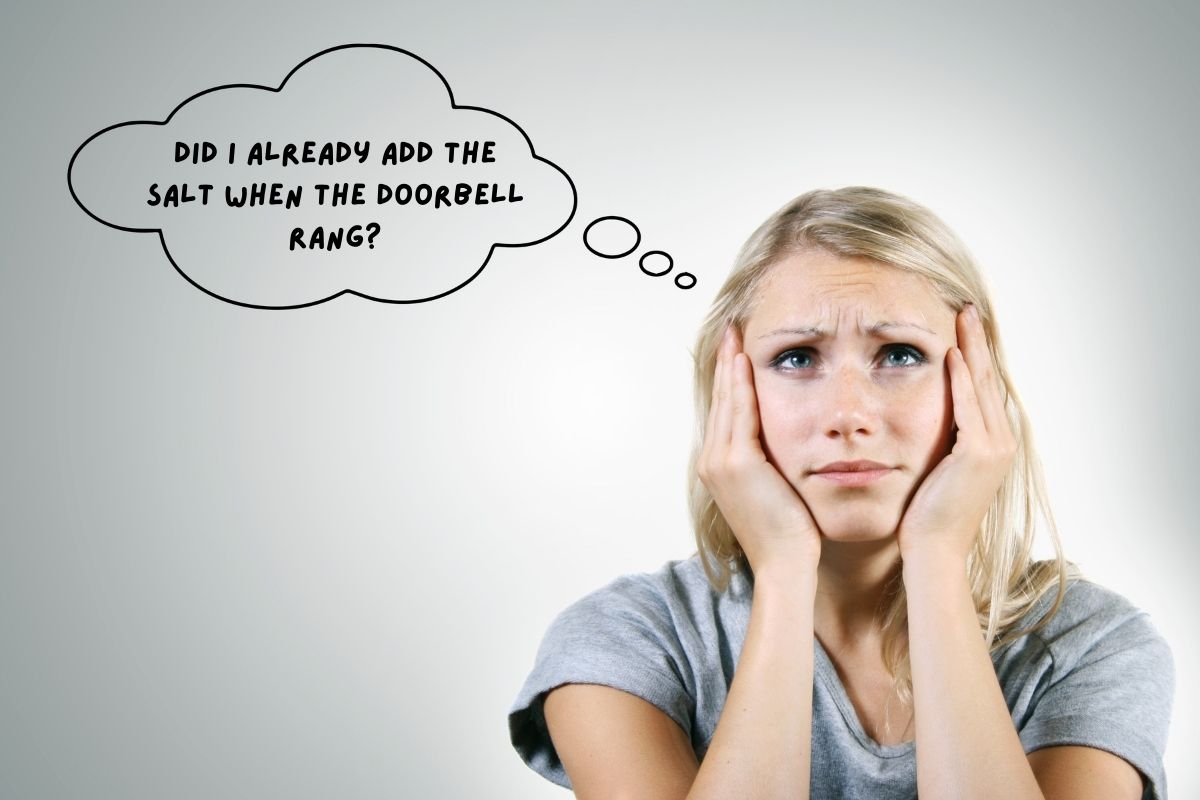
We’ve all done it!!! Whether you add too little or too much liquid or flour, the result can be a dense loaf of bread. Measuring (weighing is even better) everything out ahead of time is a good habit. (I don’t always do this, but I should.)
6. Is your water heavily chlorinated?
Water with a high chlorine level doesn’t always play nice with yeast. Tap water usually works, but try spring water if you have trouble with your bread.
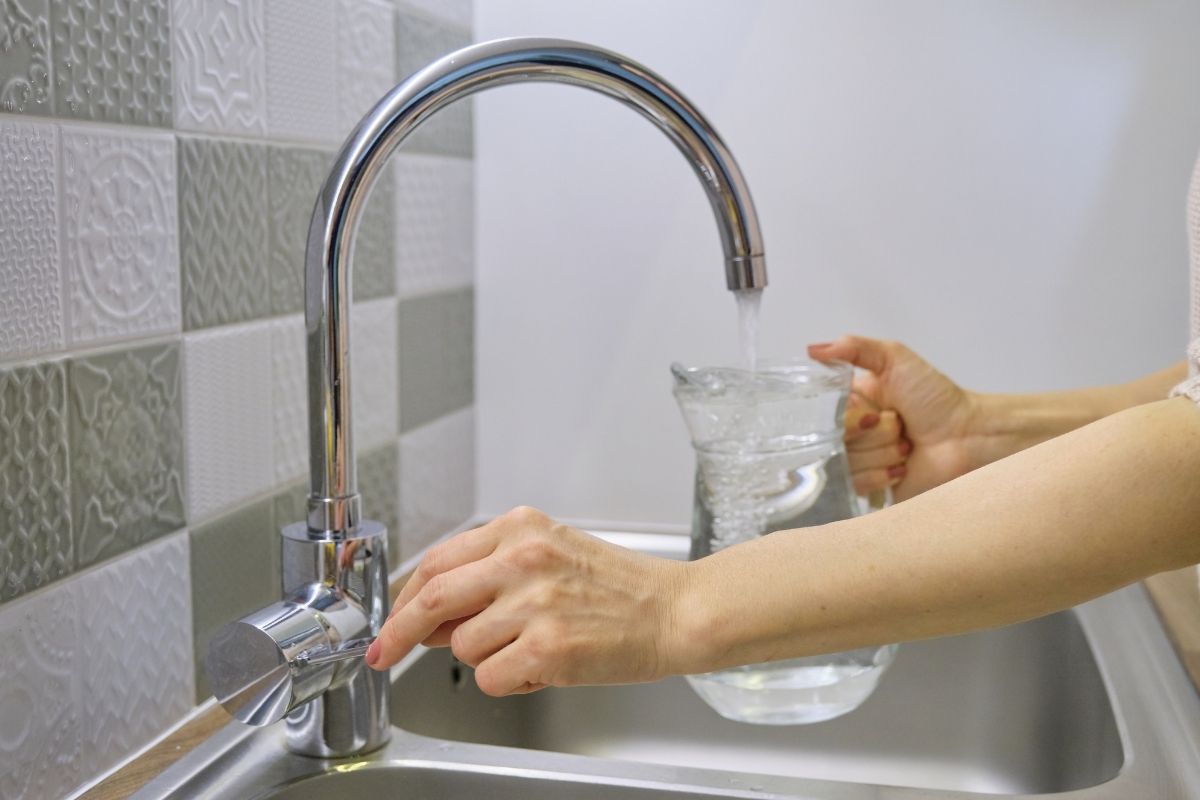
📌Kitchen Secret📌: Draw a pitcher of water and let it sit on the counter for 24 hours to allow the chlorine to dissipate before using.
7. Did you forget to add the yeast?
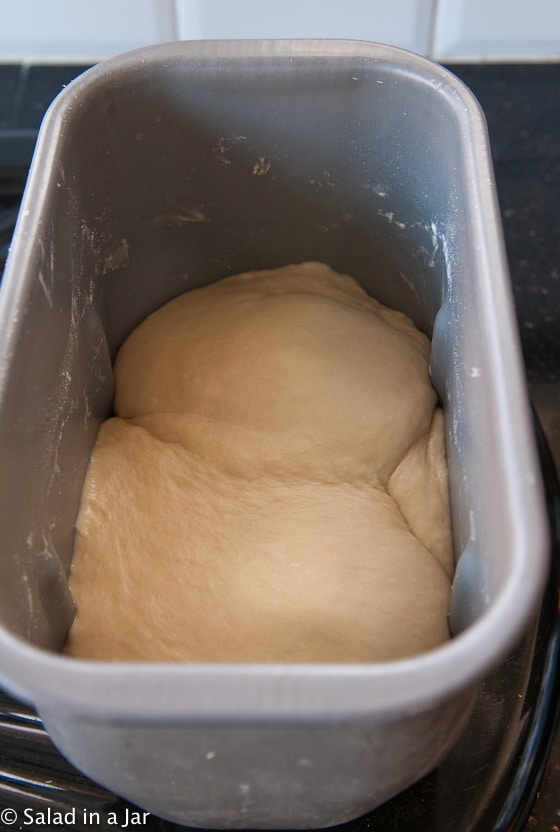
I’ve done this more than once. That’s why I know how to fix it. Read about how you can recover your dough. If this happens, don’t count on fresh bread for dinner.
**Remove the dough from the bread machine after kneading in the yeast, shape it by hand, and bake it in your oven. The timing will be off, so baking in your bread maker won’t work now.
8. Is your yeast still viable?
Check the expiration date. Dissolve the yeast in a small portion of the liquid from the recipe if you aren’t sure. Watch for bubbles within the next 10-15 minutes. Bubbles tell you the yeast is good.
9. Did you measure the ingredients accurately?
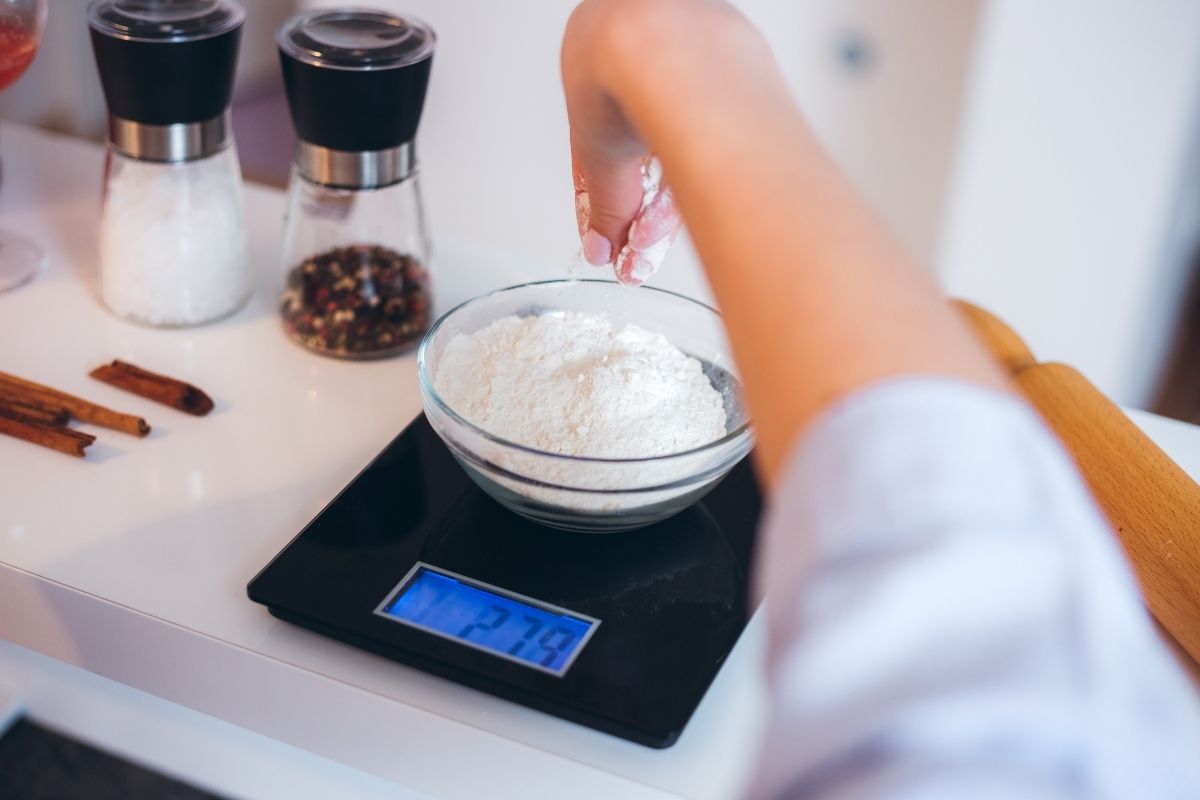
Buy a digital scale(paid link) and start weighing your flour. Don’t be a “scooper.” Read about the correct way to measure flour in this post.
Getting the amount of flour right is vital due to the high flour ratio to the other bread ingredients. Measuring one or two tablespoons too much per cup (easy to do) can cause your bread to be dense.
You may think that Grandma made excellent bread and never weighed anything. She was probably mixing by hand with lots of experience, too. However, using a machine (a stand mixer or a bread machine) is a different game.
Handling the Dough
10. Did you knead your dough long enough to develop gluten?
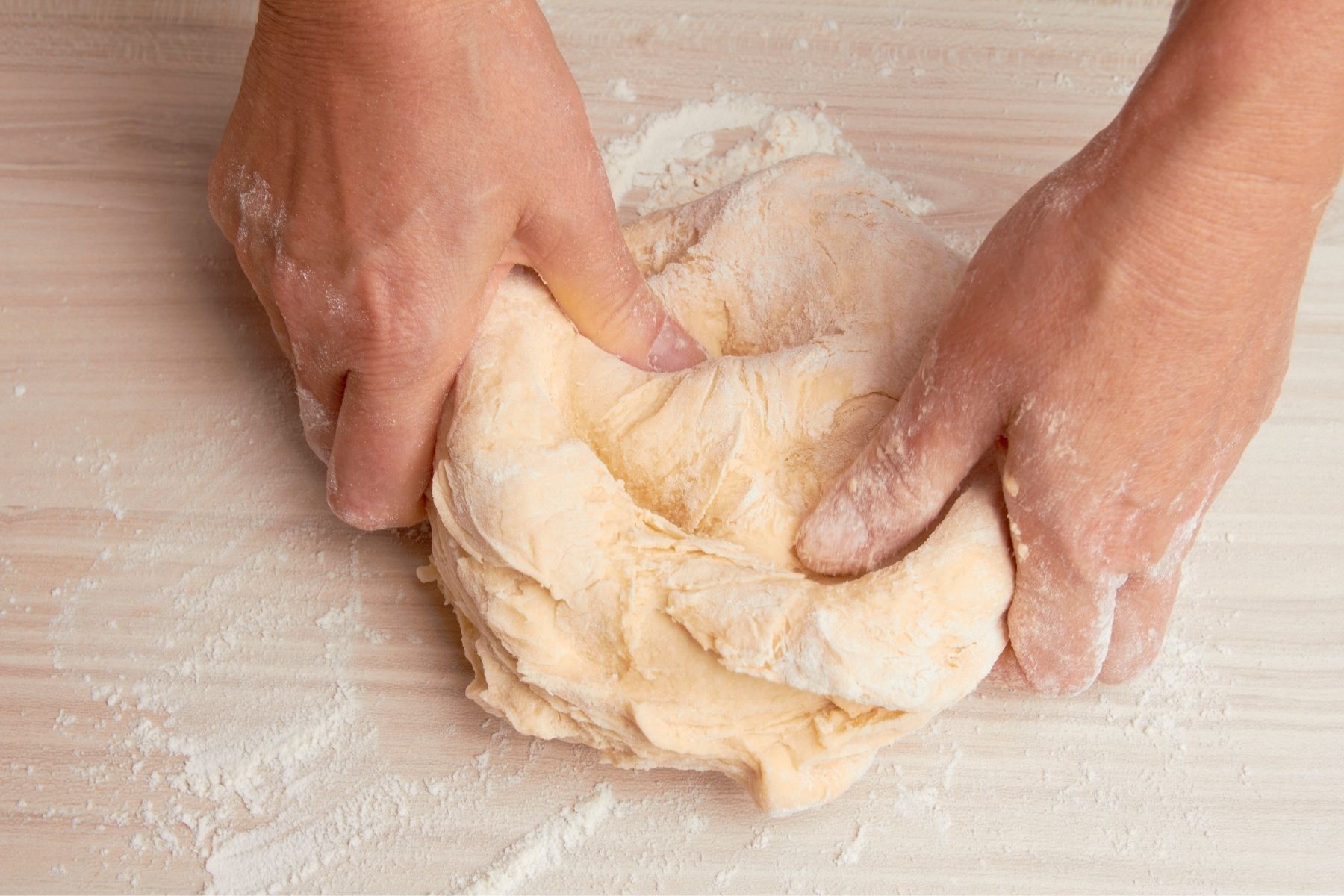
Before you bake bread, you must develop gluten first.
- No-knead bread recipes accomplish this with water and time.
- Traditional recipes require manipulation with your hands or a machine.
- Some refrigerator bread doughs combine both methods.
Without getting too far into the weeds, the gluten must untangle and rearrange into long strands. These strands will form a “netted bag” to hold all the carbon dioxide bubbles yeast produces.
The dough will be smooth, shiny, and elastic when those strands are strong and well-organized in a traditional recipe. Some people employ the windowpane test to evaluate gluten development. This involves spreading the dough between your fingers to test whether you can stretch the dough (gluten strands) thin enough to see through it without the dough tearing.
If your dough is rough and tears easily, keep kneading. Experience helps you know when the dough is “Goldilocks” right.
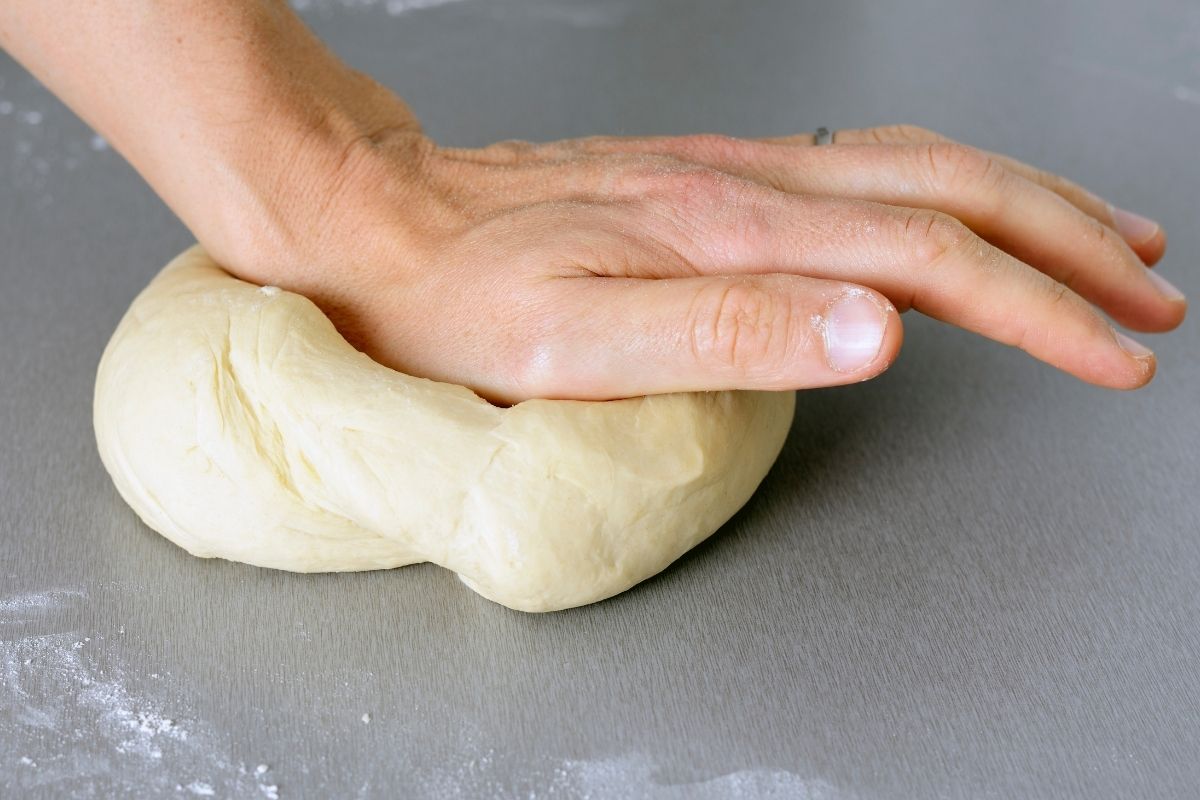
11. Did you allow the bread to fully proof or rise at least twice?
Most (but not all) recipes require two rises. Shortcutting either rise time can cause your bread to be small and dense.
How do you know when the bread has risen enough the first time?
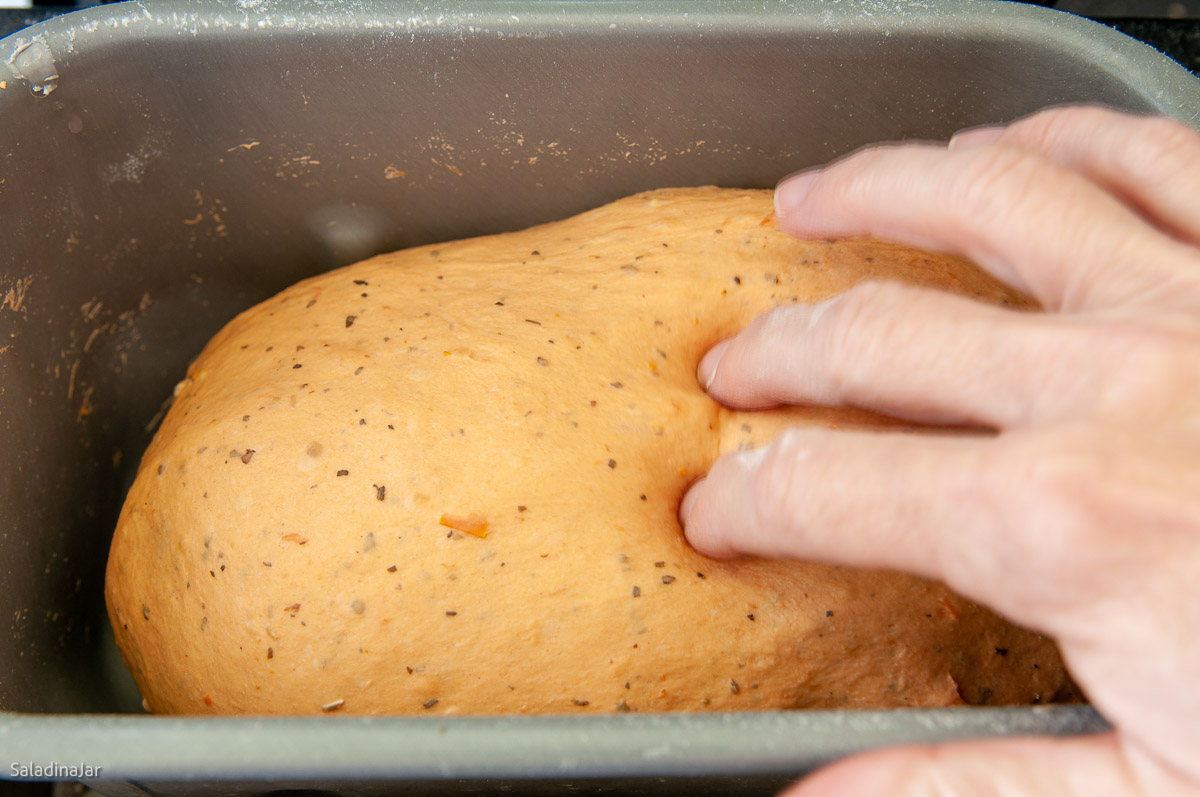
- Use two floury fingers to indent the dough. If the dough has been proofed correctly, the dough will immediately and slowly start to fill in the hole. The next step is to gently de-gas or flatten the dough with your hands and shape it.
- If the hole fills in quickly, the dough needs to rise longer. Check back in 15-30 minutes.
- If the hole doesn’t fill in, the dough has most likely been over-proofed. Push it down gently and let it rise again. Observe it to catch it at the right time, and you might have a chance at a decent loaf, but no guarantees.
How do you know when the bread has risen enough the second time?
Use one finger or knuckle to press the side of the loaf gently. The dough should show a slight indentation. If it bounces right back, the dough is not ready. If the indentation doesn’t fill in, the dough is likely over-proofed and may fall when baking. Dense bread is your reward.
Here are a couple of other tips about the second rise:
- If using a loaf pan, the dough should not fill the pan more than half full. When the dough peeks over the edge, it’s a sign that the bread is ready to bake.
- Although the first rise is usually done when the dough has doubled in size, in my experience, it’s better to end the second rise just before the dough has doubled. This leaves a little more room for oven spring. If your bread doesn’t get any bigger from the time you put it into the oven and when you pull it out, you will know the dough rose a little too long the second time.
12. Did you use too much flour when shaping the dough?
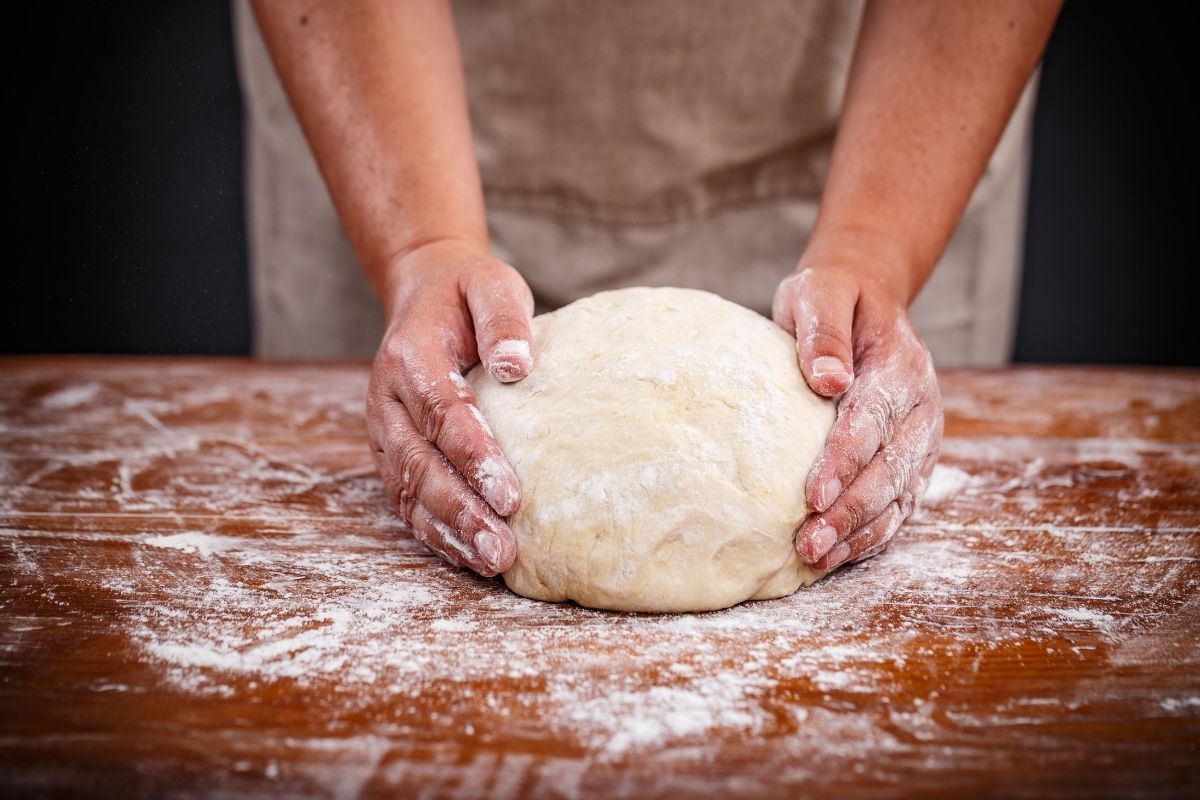
Use as little flour on your work surface and hands as possible. This is not usually a problem if you get the consistency right when mixing the dough.
TIP: Try using a little olive oil or water on your hands instead of flour to reduce the sticky factor.
**Bread machine users: Questions 11 and 12 only apply when using the DOUGH cycle.
13. Was your oven preheated before baking the bread?
Oven spring happens to a loaf of bread when exposed to high heat. A preheated hot oven will cause your loaf to “spring” up. Extreme heat creates a lighter, airy crumb, especially in rustic bread.
**Bread machines don’t heat much higher than 350˚F. Add to that the fact that your bread dough is already sitting in the bread machine oven as it preheats. That’s why getting a good oven spring and a crispy crust with a bread maker is challenging. It’s another reason to use the DOUGH cycle and bake your bread in a conventional oven.
14. Did you let your loaf cool completely before slicing it?
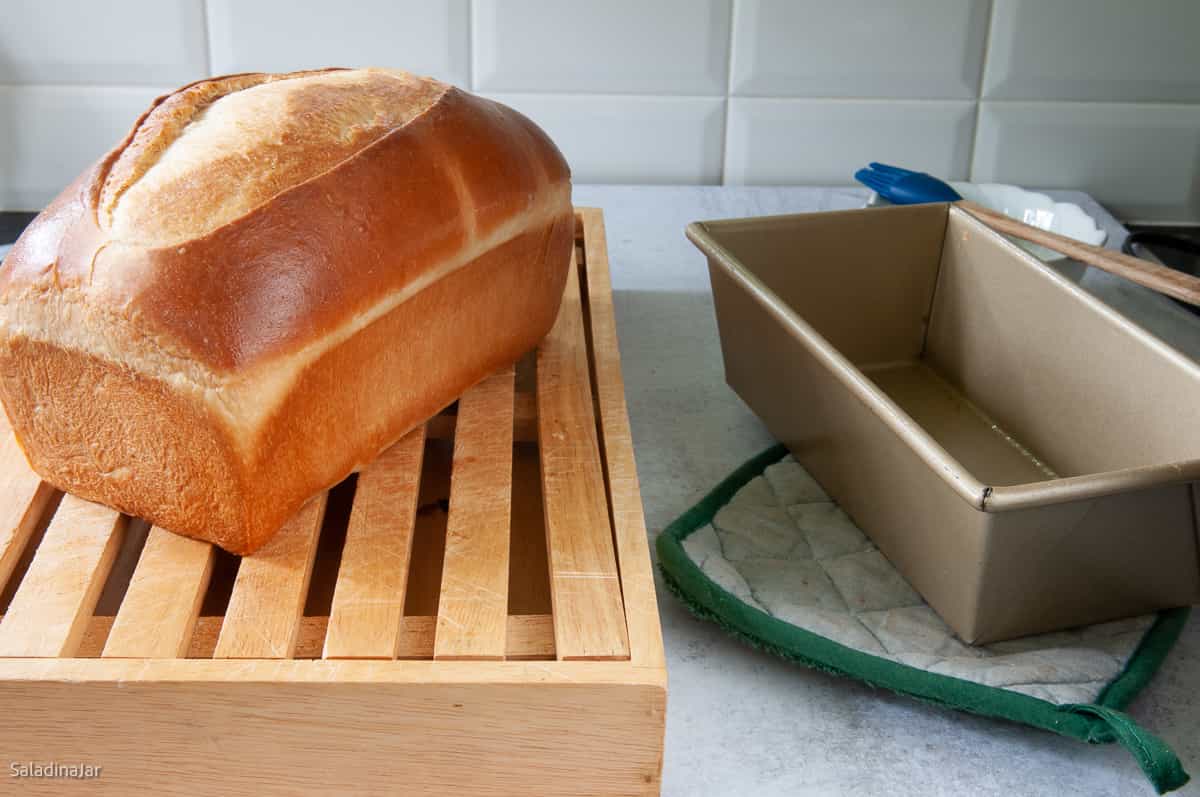
Depending on their size, loaves of bread can take 1-3 hours to cool. During this time, the starches are still moving around and settling down. Consequently, slicing the bread too early may cause a gummy and dense crumb.
Temperature and Climate Issues
15. Did you add any ingredients that were too hot?
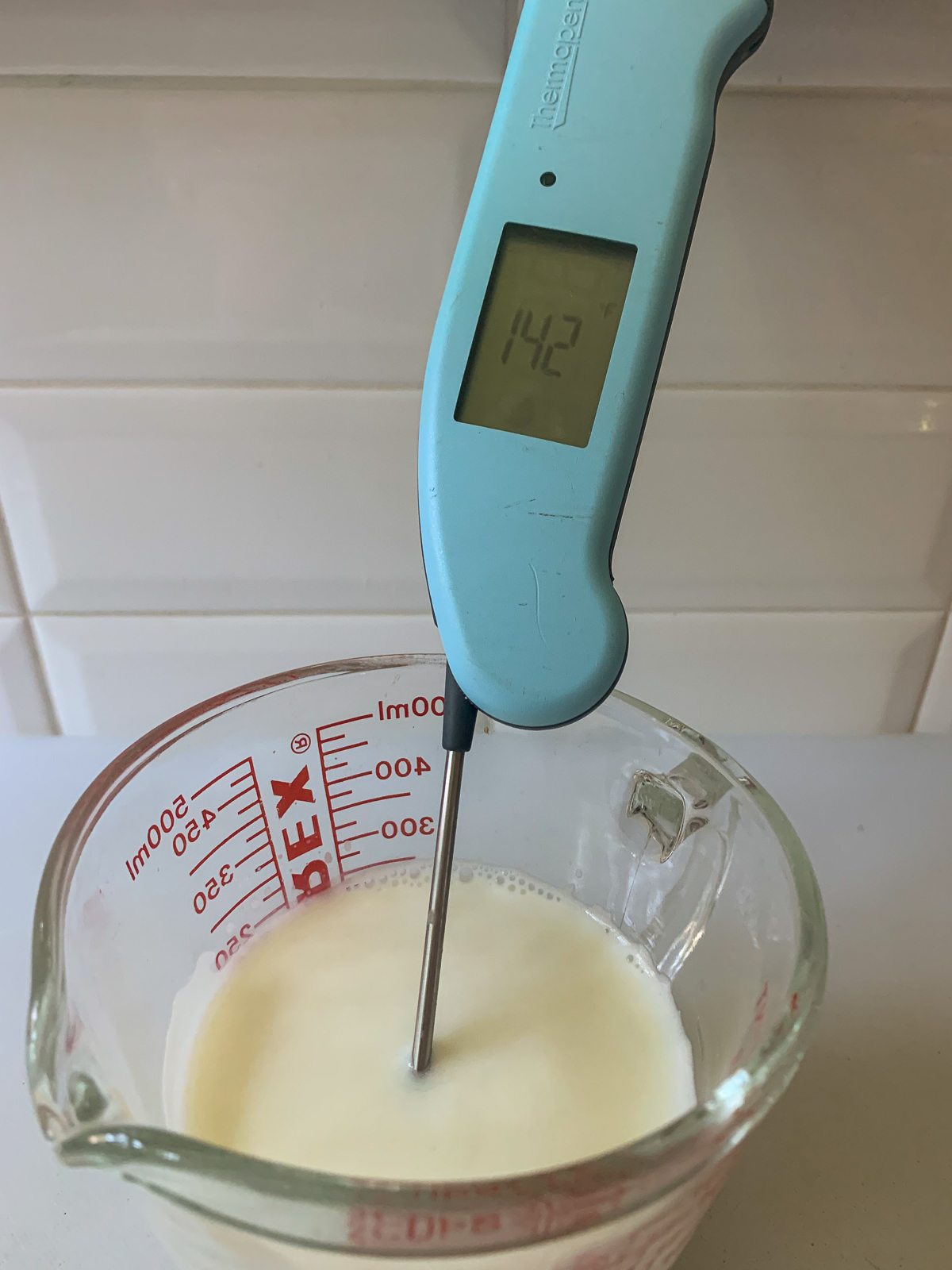
Hot liquids, butter, or add-ins like still-hot roasted nuts can kill the yeast. Allow any hot ingredients to cool before adding. According to Bob’s Red Mill, yeast will begin to die off around 120˚F. At 140˚F, none will survive.
16. Do you live at a high altitude?
High altitudes can play havoc with bread. I advise looking for recipes online tested by somebody who lives in your area or at a similar altitude.
17. Is your current weather extremely hot, cold, humid, or dry?
Extreme weather conditions can affect the quality of your dough and fermentation. Be prepared for shorter or longer proof and bake times than average.
📌Kitchen Secret📌 This might be a good time to try the DOUGH cycle on your bread machine. Shape the dough yourself and bake in your conventional oven. Adjusting the proofing and baking times for your current weather conditions will be easier.
Why Is My Bread Machine Bread Dense?
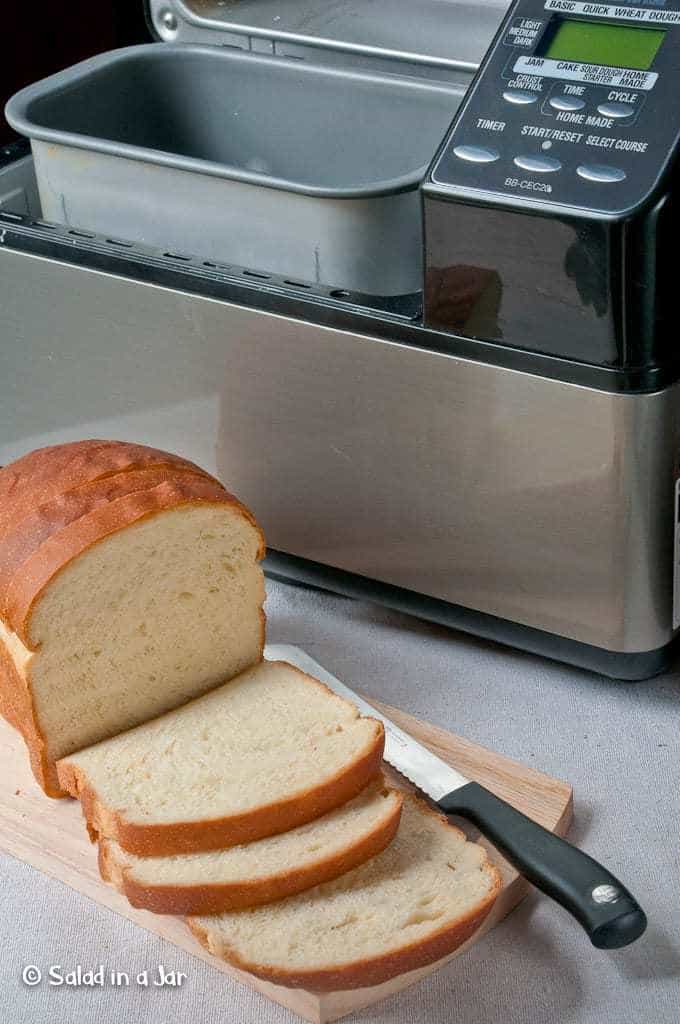
To all bread machine owners and users
Your bread maker has no brain! (I know. Obvious but sometimes forgotten.)
Like a computer, it can only do what you tell it to within the constraints of somebody else’s programming.
When you agree to let a machine do the kneading and baking, you put your bread in the hands of a pre-set timer.
The timer is now the BOSS and will make all decisions about your bread. Your job is to set up the bread dough to perform in a way that aligns with the timer.
Talk about a daunting task! Consider all the variables like weather, ingredients, and how your machine is programmed.
Before you throw out your machine,
I have good news. You are not forced to let the bread machine make all the decisions. You have options. Are you open to a different baking process? Don’t miss this post about how to make beautiful bread with a bread machine.
Let’s discuss some things you can do to ensure success with your bread baking.
18. Were the kneading paddles engaged correctly?
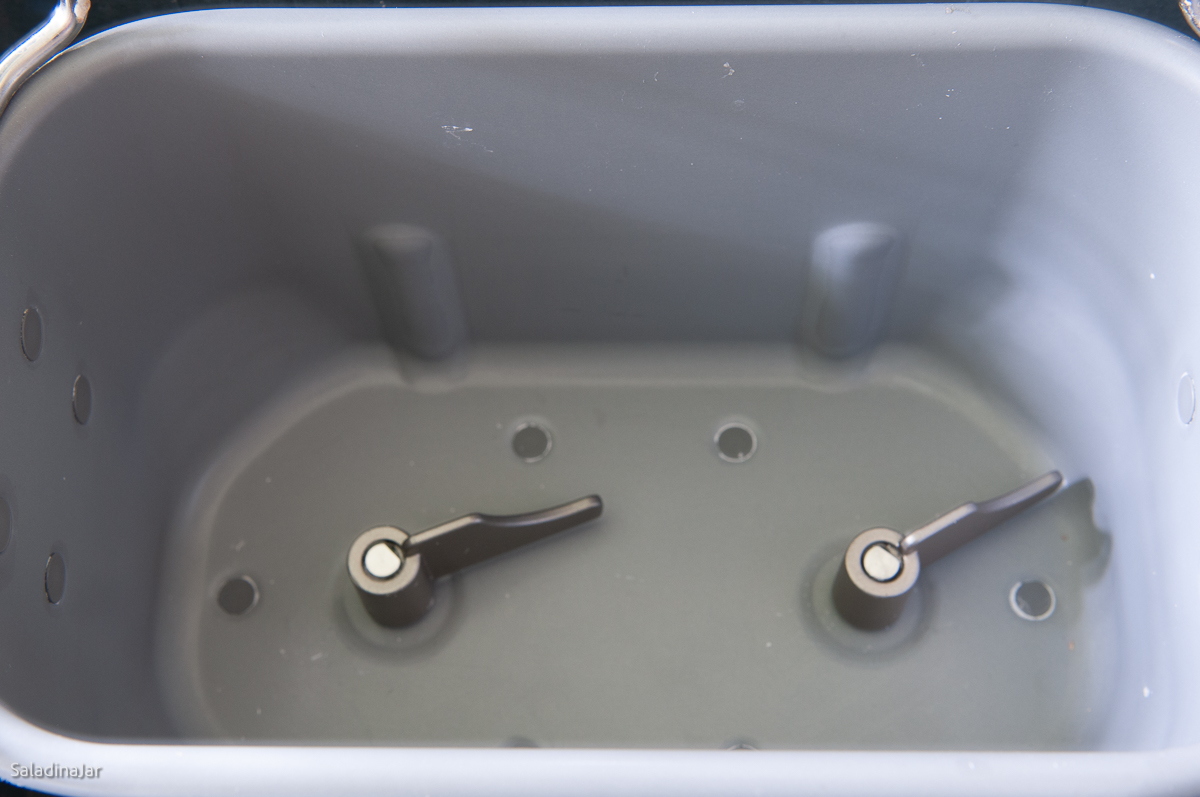
Were the blades pushed down all the way? Was the top of the blade flush with the post so the paddles would operate as designed? If not, the dough will not knead properly.
Like a netted shopping bag with holes, poorly kneaded bread won’t form a strong gluten network. Without that structure, your bread may not rise evenly, especially sourdough bread.
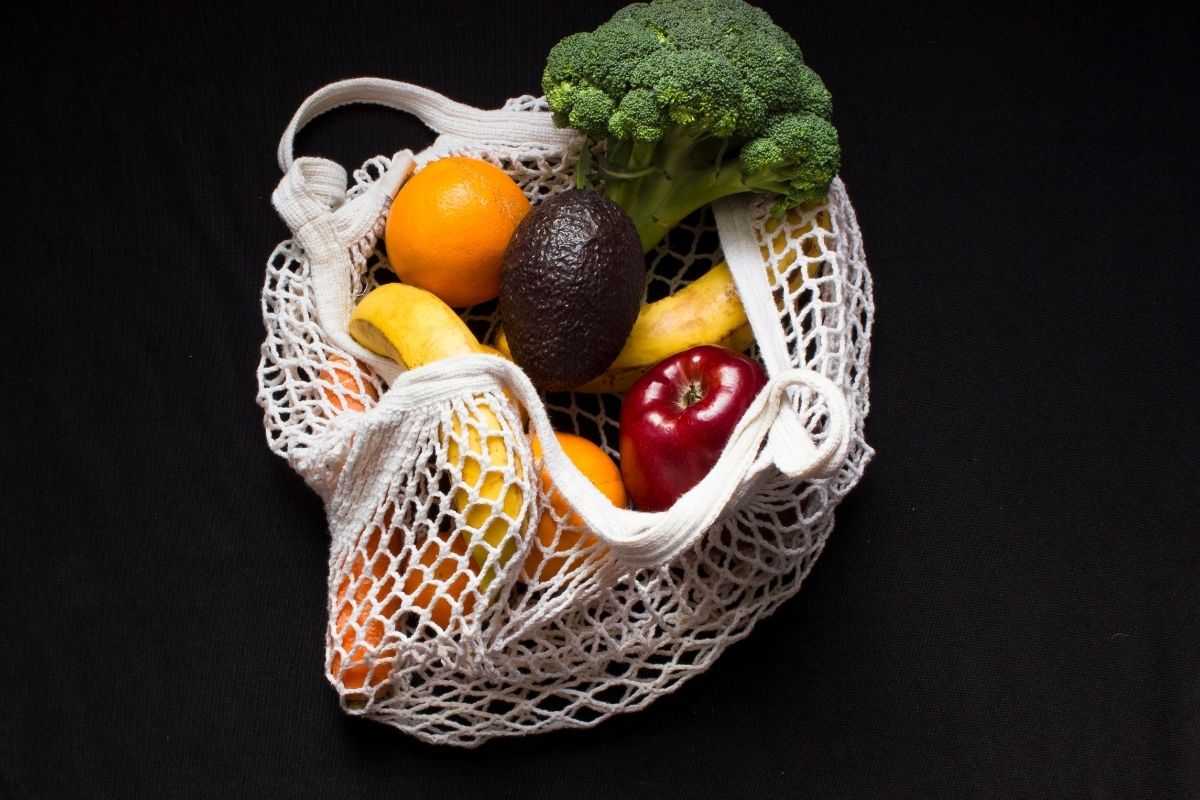
Do the bread machine blades seem sluggish? As a machine ages, the belts can stretch and even break. Watch for that if you use your machine a lot.
19. Is the size of the recipe within the manufacturer’s recommendation?
Do you know the limits of your machine? Check the recipes listed in the bread machine manual. For example, a manufacturer may advertise the machine as suitable for a 1-2 lb. loaf.
A 2-pound loaf will usually contain 4-1/4 cups of flour. A recipe with 5-6 cups of flour may challenge your machine to knead that much flour efficiently and correctly. The motor can overheat.
Don’t try to double a bread machine recipe.
Using a larger recipe than recommended will likely cause the dough to rise too high. When the pan is not large enough, the dough is in danger of falling. Anytime your bread falls, it will be dense.
A recipe that is too small presents a kneading challenge. The paddles in your machine may be unable to pick up and knead the dough correctly. Also, the large bread machine pan will make your loaf appear squatty even if it turns out perfectly.
20. Did you use active dry yeast instead of instant yeast?

I doubt if this is your problem, but the type of yeast could be an issue, so it’s worth mentioning.
In years past, active dry yeast required dissolving to activate. Modern-day formulations no longer require dissolving (although you still can if you want). However, active dry yeast is a little slower to start the fermentation process. Adding a quarter teaspoon more active dry yeast may help.
**Instant yeast(paid link) (aka bread machine yeast) dissolves when wet. Newer bread machines are designed to use instant yeast. I ALWAYS use instant yeast.
21. Did you substitute all-purpose flour for the bread flour specified in the recipe?
Many people ask about substituting all-purpose flour for bread flour. Because all-purpose flour is a low protein flour, it can make a difference in how compact and dense your bread turns out if bread flour is specified in the recipe.
Try to stick with the recipe recommendation for the best results when possible.
The bread machine timer cannot recognize that your bread dough hasn’t risen enough. So the baking cycle will start and bake your loaf, ready or not.
If you don’t want to or can’t use bread flour, try one of these ideas with all-purpose flour:
- Use the DOUGH cycle on your machine for more flexibility. When the DOUGH cycle ends, remove the dough and shape it by hand. Bake in a conventional oven after the dough has been proofed again.
- Add Vital Wheat Gluten to your recipe to help the all-purpose flour rise more quickly.
22. Were you careful to keep the yeast dry (especially when using the timer)?
Do you like to use the timer on your bread machine? If so, be especially careful that the yeast does not come in contact with any moisture before the mixing and kneading begin.
Once the yeast gets wet, the meter starts running on the yeast. The fun is over when the meter runs out, even if your bread hasn’t proofed enough. The machine doesn’t recognize what is happening, so the bread bakes, ready or not.
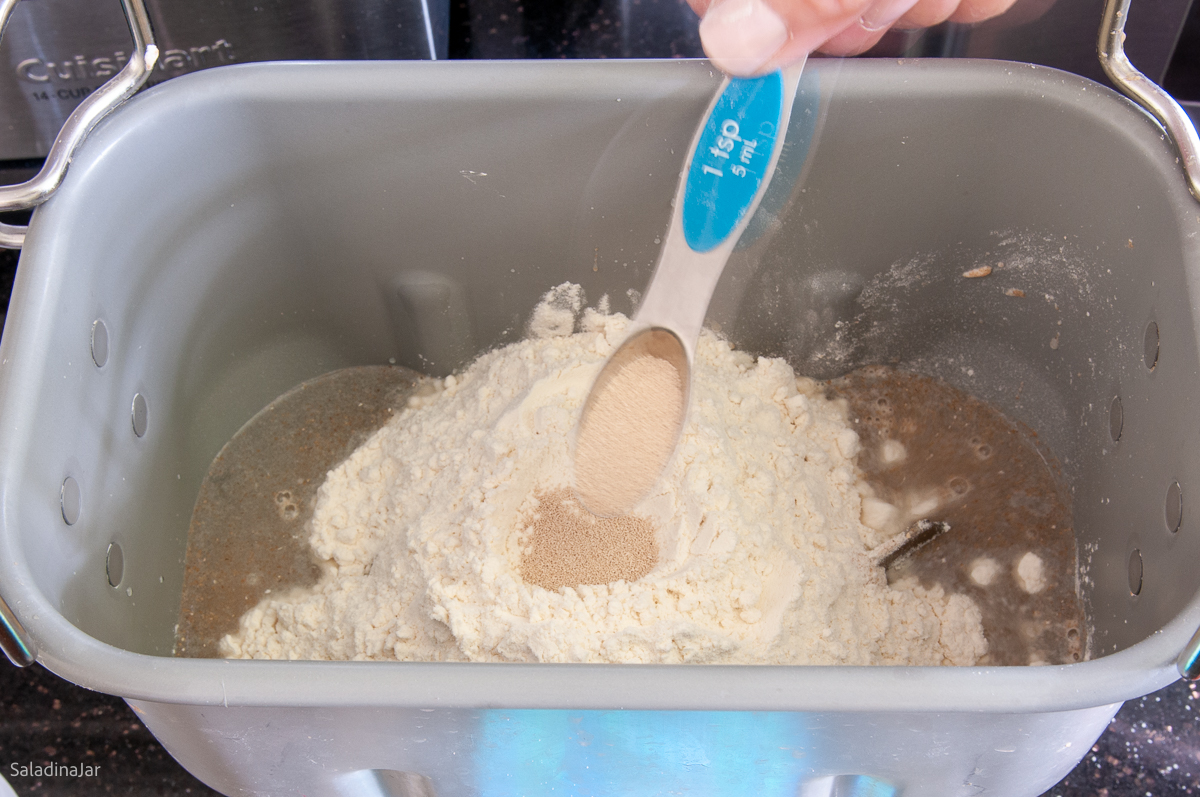
23. Was your dough too dry or too wet while kneading?
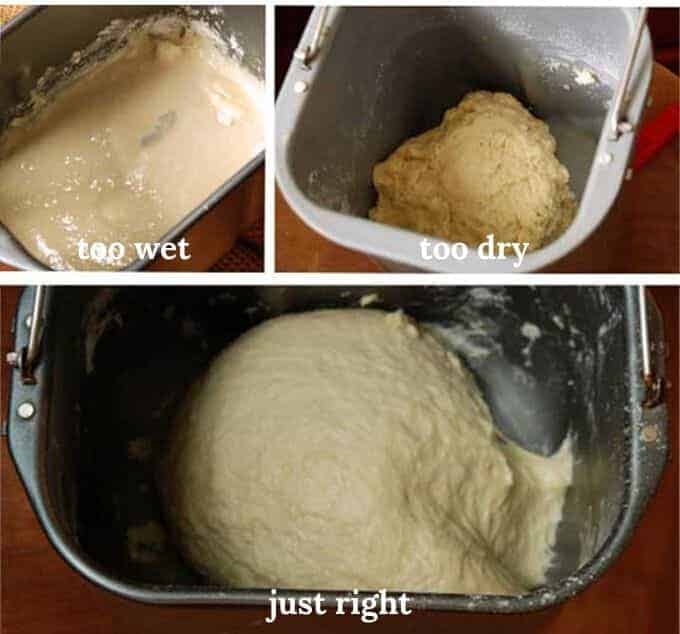
How stiff or wet your dough is has a significant effect on how your dough will handle and bake. Dough consistency will also determine how fast or slow your dough will ferment.
Too wet, and the dough rises faster. Too dry, and the dough will take longer to proof. If you’ve ever worked with sourdough starter, you can see this in action.
**Bread machine users: Always open the lid and check. Read this post to learn how to fix a consistency problem on the fly in a bread machine. It will make all the difference, I promise.
24. Was the gluten well-developed at the end of the kneading portion of the cycle?
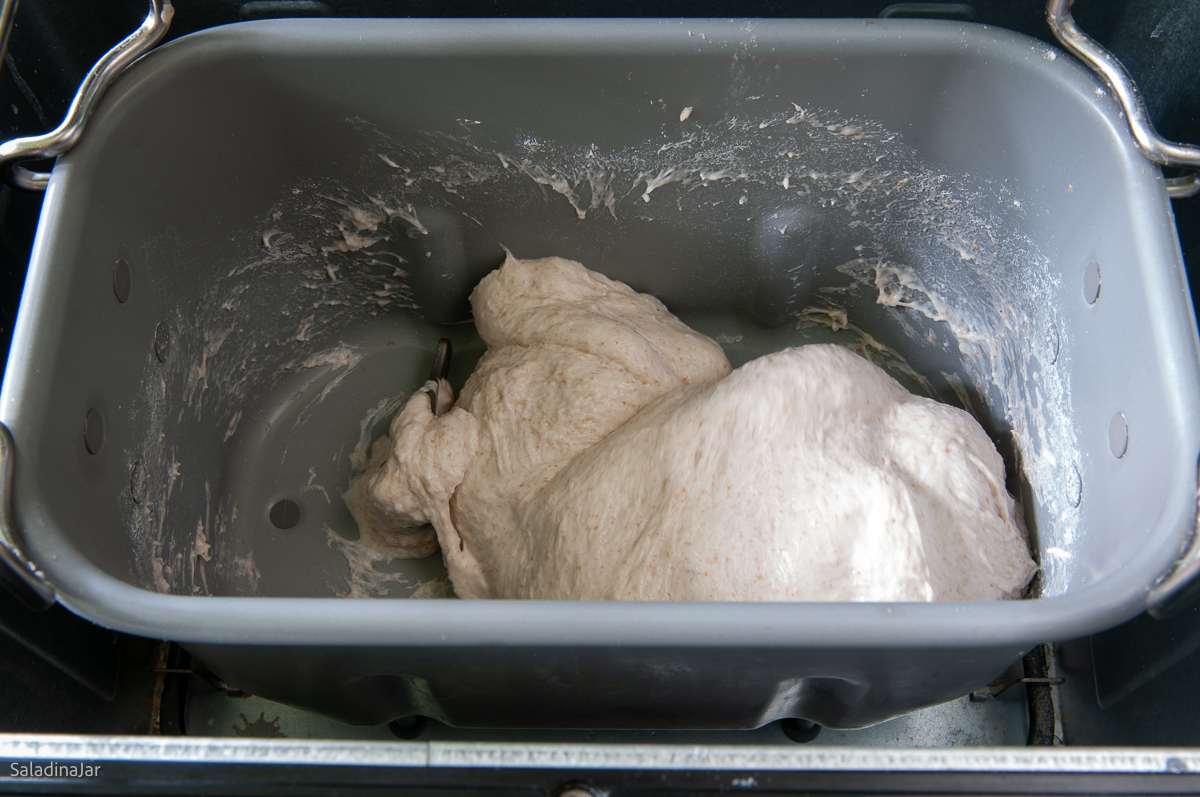
Open the lid and check. The dough should be shiny and elastic, not dry, shaggy, or wet like cookie dough. When too wet or too dry, it’s hard for the dough to get traction.
Gluten will not develop without friction. See question #20 and make sure your dough is neither too wet nor too dry while you can still fix it.
THE GOAL: When the dough is almost done kneading, it should briefly stick to the sides (provides friction), then pull away cleanly. This does not apply to certain wet doughs like ciabatta, brioche, or rye bread. However, it’s a general principle that works for most bread recipes.
Parting thoughts: I hope you will be clapping or saying a prayer of thanks for your new insights the next time you make bread!
If you have questions or suggestions, email me privately for a quick answer: Paula at saladinajar.com. Hope to see you again soon!


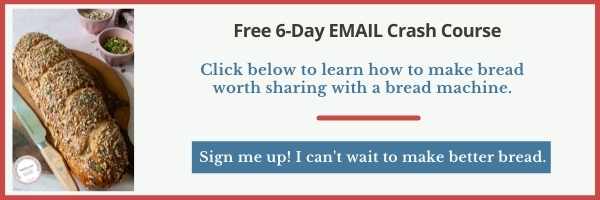
Paula Rhodes, owner
As a retired home economist, I created Saladinajar.com to share my belief that you don’t have to be a chef to find joy in creating homemade food worth sharing. Bread machines (used in an unconventional way), homemade yogurt, and quick microwave recipes are my specialty.